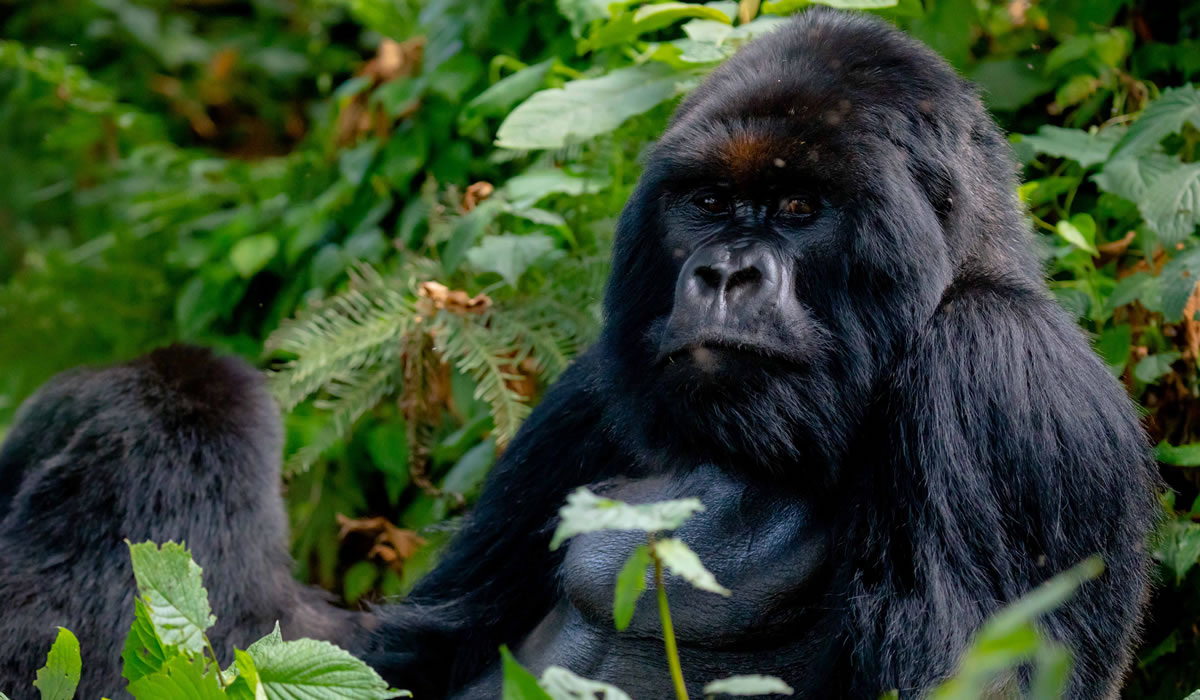Rwanda’s astonishing mountain scenery, all year friendly climate and superb wildlife makes it a remarkable East African destination to visit.
As per the 2017 gorilla census, the total population of mountain gorillas alive now is just over 1000, of which over 10 families live in Rwanda. That’s partly why gorilla trekking in it is regarded as truly one of the ultimate life experiences. Being an upmarket destination, Rwandan gorilla permits cost as much as $1500 per trekker. Nonetheless, it is worthwhile as the one hour that you will spend in the company of these great apes is full of invaluable memories. You will watch how different members of the gorilla family interact, groom each other, harvest wild fruits, play, sulk, tease and doze. Simply put, volcanoes gorilla tracking excursions areas worthwhile as the hype suggests. And with its high-end safari lodges and easy accessibility, it is best suited to visitors who want a taste of the African rainforest without too much discomfort.

To understand the history and horrors of the past, and to truly appreciate just how far gorilla conservation has come in Rwanda, you can’t miss the one hours hike to the grave of Dian Fossey. It is as located in a saddle area between Mount Karisimbi and Mount Bisoke. The area is also home to Karisoke Research Centre, an internationally renowned research station dedicated to the study of gorilla ecology, demography and social organization. Here, you will find a nicely laid out small informative museum. Exhibits are easy to walk through and tagged with good information.
Other highlights of Volcanoes National Park include half day trips to the bamboo zone of the mountain to see a troop of habituated golden monkeys. This strikingly marked species is restricted to the Virungas—as a result of deforestation elsewhere within its limited range.
Any ardent fan of Big 5 safaris will be thrilled by Akagera National Park. With its vast lakes and rolling green hills, it is unquestionably beautiful. Wildlife-wise it is worthwhile, with lots of elephants, masai giraffes, hippos, impala, buffalo, lions, leopards, topi, crocodiles and hippos. The sufficient bird life also makes Akagera a wonderfully rewarding park to visit. Its competitive advantage in comparison with Masai Mara is that it offers that satisfaction of being away from the crowds as it is not packed with tourists.
Cycling enthusiasts can’t go wrong with the 227km Congo Nile Trail adjacent to Lake Kivu (Rwanda’s beach destination). It offers a delightful way to experience daily life in traditional villages, tea plantations and explore a historic church. During your stopovers enroute the shoreline, you can have a swim, paddle-board on the lake or sample Arabica coffee where it’s made. With a peak elevation of 2630m, this trail is a great workout.
On the other hand, primate lovers will love every minute spent at Nyungwe National Park, a wild habitat of 13 primate species including chimpanzees. Here, you will find Umugote Trail, as famed for its sensational views of countless ridges, packed rainforests, colourful flowers and on a clear day, the Kibira National Park in Burundi. To experience a real sense of the scale of Nyungwe Forest, don’t hesitate to try out its canopy walkway. The suspension of its gravity-defying bridge 50m above the forest canopy makes it the highest canopy walk in East Africa. It will treat you to an awesome dose of adrenaline rush and unforgettable view of the sprawling Nyungwe.
The highest point of elevation from which one can behold Rwanda is Mount Karisimbi(4,507m above sea level). Its name means white shell, in reference to the frequently white-capped cloud cover that hovers over its summit. Due to its strenuous nature, many prefer to hike it in two days, camping along the way. One doesn’t need to be extra lucky to be able to bump into primates and many bird species along this trail; you just need to be in the right spot at the right time.
Referred to as the ‘Land of a Thousand Hills’, Rwanda has seen an amazing social, economic and environmental transformation over the last three decades, rising from a desperate third world country to a preferred business tourism hub. Most importantly, having learnt a lot the hard way from the 1994 genocide that claimed around 800,000 people, it has achieved tremendous political stability and peace. This follows the restoration of a harmonious relationship between its two main tribes, the Hutu and Tutsi. To learn more, you can visit Kigali Genocide Memorial. It offers anin-depth insight into the divisive colonialism that Rwanda underwent under the Belgian rule, culminating into the genocide. As the guided tour progresses, the exhibits become steadily more powerful. Watching testimonies from survivors of the crimes is a touching experience. It’s incredible how Rwandese have managed to pick up the pieces and move on from this past. Nowadays the country is thriving, and the tourism industry is playing a pivotal role in the upliftment of the people.
At Iby’iwacu Cultural Village in Kinigi, you will find anon-profit umbrella organization that aims to empower the lives of reformed poachers and communities living around Volcanoes National Park. This has been accomplished through establishment of conservation incentives and livelihood-based projects.The village offers fascinating cultural experiences where tourists learn about traditional Rwandese practices. During your guided tour, you will also participate in food preparation processes like grinding millet using stones and preparing a local dish. In the evening, you will join village members as they gather around a campfire for a storytelling and dancing experience.
You should be here!

